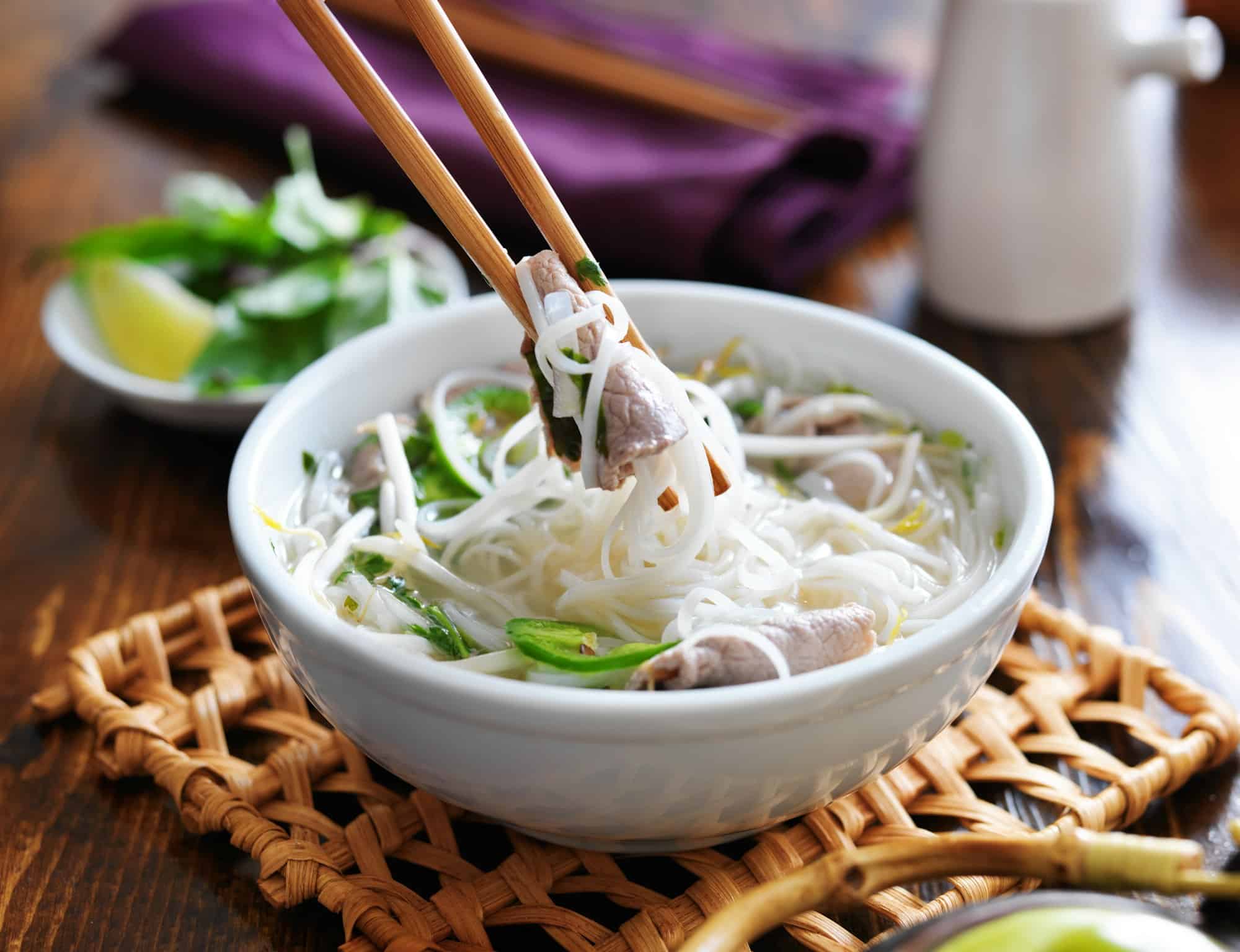What’s the Technique for The Ultimate Vietnamese Pho with Homemade Broth?

Pho is a ubiquitous Vietnamese soup that combines the comfort of a hearty broth, the tenderness of beef, and the smoothness of noodles. The distinctively aromatic and flavorful broth, the highlight of this dish, can transform your dining experience from ordinary to extraordinary. The secret lies in the art of creating this homemade broth, infused with authentic Vietnamese flavors.
The Essential Elements of Pho
Without a doubt, the soul of the pho lies in its broth. It is a symphony of flavors, achieved by simmering beef bones for a significant amount of time and spicing it with a unique blend of Vietnamese herbs. The accompaniments of fresh meat, noodles, and an array of garnishes add texture and balance to the dish.
Also read : How to Create a Delectable Dark Chocolate Tart with Sea Salt Flakes?
The Broth: The Backbone of Pho
The broth is the essence of pho, and its preparation demands careful attention and patience. The use of beef bones is crucial to ensuring that the broth is rich and flavorful. It’s best to use a mix of marrow bones and knuckles. These bones are known for their collagen content, which gives the soup a silky mouthfeel.
Firstly, blanch the bones in boiling water for about 10 minutes to clean them thoroughly. This step will also help to remove any residual blood or impurities from the bones. After blanching, rinse the bones under cold water and set them aside.
In the same genre : Can You Prepare a Flavorful Indian Chicken Tikka Masala with Homemade Naan?
Take a large pot and fill it with about six liters of water. Add the cleaned bones and let it come to a boil. After reaching a boil, reduce the heat and allow the bones to simmer. It’s important to occasionally skim off any impurities that float to the top to maintain the clarity of your broth.
The Spices: The Pulsating Heart of Pho
The spices used in this broth are what give pho its unique character. They are the pulsating heart of this dish, offering a magical blend of sweetness, warmth, and depth. The classic spice mix for pho includes star anise, cloves, cinnamon, cardamom, and coriander seeds.
To unlock the full potential of these spices, they should be lightly toasted before being added to the broth. This is done by placing them in a dry pan over medium heat. Shake the pan gently to prevent the spices from burning. When they start to release their aroma, they are ready to be used.
These spices are then enclosed in a spice bag or tied up in cheesecloth and added to the simmering broth. The spice infusion should be allowed to simmer for at least three hours, although more time will only enhance the flavors.
The Meat: The Substance of Pho
Pho wouldn’t be complete without the protein, and beef is often the preferred choice. Beef lends itself well to the robust flavors of the broth and provides a satisfying chew to the dish. The cuts of beef you choose will depend on personal preference. Some like the richness of brisket, while others prefer the tenderness of sirloin.
To prepare the beef, briefly blanch it in boiling water, then rinse under cold water to remove any impurities. The meat is then added to the pot and simmered along with the bones and spices.
The Noodles: The Body of Pho
Rice noodles, known as bánh phở in Vietnamese, are non-negotiable in a bowl of pho. They provide body to the dish and are a wonderful carrier for the aromatic broth. The noodles should be cooked separately according to package instructions, then rinsed under cold water to stop the cooking process. They’re then added to the bowl just before serving.
The Sauce and Garnishes: The Final Touch to Pho
To complete the pho, it’s time to focus on the garnishes and sauce. Fish sauce, a staple in Vietnamese cuisine, is typically added to the broth for an extra layer of umami. Fresh herbs like basil and cilantro, along with lime wedges, bean sprouts, and fresh chilies, are served on the side, allowing each person to customize their bowl of pho to their liking.
So, the next time you have a craving for a warm, comforting bowl of soup, consider making Vietnamese pho. With a little time and effort, you’ll be rewarded with a rich, flavorful broth, tender beef, and perfectly cooked noodles. Enjoy the process and savor the flavors of this iconic Vietnamese dish.
Mastering the Art of the Perfect Pho Broth
Producing the perfect pho broth is a labor of love. The broth is slowly simmered for hours to extract the flavors from the beef bones and spices. The result is a rich, flavorful broth that forms the foundation of your Vietnamese Pho.
Commencing with the blanched beef bones, the broth is brought to a boil and then reduced to a slow simmer. Throughout the simmering process, it’s essential to regularly skim off any frothy impurities that float to the surface. This ensures a clear, clean broth, which is a characteristic hallmark of a good pho.
The spices, carefully toasted to release their full flavor potential, are then added. Star anise, cloves, cinnamon, cardamom, and coriander seeds are the classic spices in a pho spice mix. These spices, enclosed in a spice bag or cheesecloth, infuse their flavors into the simmering broth. The spice-infused broth is allowed to simmer for at least three hours, or even longer for a more potent flavor. This meticulous process results in a broth with a profound depth of flavor, a delicious balance of sweet, warm, and savory notes.
The Fine Art of Serving Vietnamese Pho
Serving the perfect bowl of Vietnamese Pho is all about the final touches. After the long simmer, the beef is removed and thinly sliced. The beef, now tender and flavorful from the lengthy cooking process, is then added back to the hot broth to keep it warm.
The rice noodles, cooked separately to the perfect bite, are added to the bowl, ready to soak up the flavorsome broth. Fish sauce is incorporated into the broth, adding an extra layer of umami and depth to the dish.
Each bowl of pho is then garnished according to individual preferences. Fresh herbs like Thai basil and cilantro, a squeeze of lime, bean sprouts, and freshly sliced chillies are popular choices. These accompaniments not only provide a pop of color but also add freshness and crunch to the hot noodle soup.
Conclusion
In conclusion, creating the ultimate Vietnamese Pho at home is a gratifying culinary journey. From the careful preparation of the pho broth, to choosing the beef cuts, and finally serving it with an array of fresh garnishes, each step contributes to the overall flavor and experience of the dish.
While the process may seem lengthy, the result is a bowl of pho that is comforting, rich, and packed with authentic Vietnamese flavors. Whether it’s a cold winter day or a simple craving for a comforting bowl of soup, this pho recipe will certainly leave you contented with its deeply satisfying flavors. Enjoy the process, make it your own, and most importantly, savor every spoonful of this iconic Vietnamese noodle soup. It’s not just about eating, it’s about experiencing Vietnam in a bowl.
